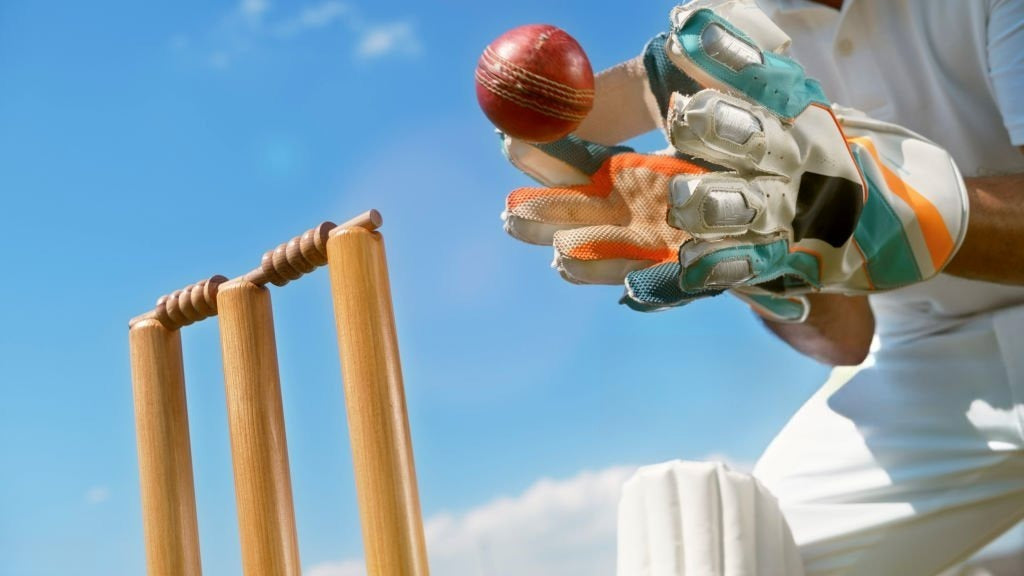How to Choose Wicket Keeping Gloves Like a Pro in 2025

Nothing stings quite like dropping a catch because your gloves let you down. As a wicketkeeper, your gloves are your best mates behind the stumps, turning split-second chances into game-changing moments. I’ve been there, fumbling through online shops, overwhelmed by fancy terms like “aniline leather” and “XRD foam.” Picking wicket-keeping gloves like a pro in 2025 means finding a pair that feels right, grips tight, and keeps your hands safe.
This guide’s packed with real-world tips, expert advice, and the latest 2025 trends to help you choose gloves that make every catch feel effortless. Let’s get you ready to shine.
Getting Clear on Your Wicketkeeping Needs
Before you start eyeing those sleek new gloves, let’s figure out what you really need. Are you a weekend warrior or a club regular chasing pro dreams? I once bought a pair of gloves that looked cool but were totally wrong for my local pitch. Knowing your role and conditions is the first step to picking a winner. Here’s how to sort it out.
What Do Your Gloves Need to Do?
Wicketkeeping is tough fast balls, spinning deliveries, and hours of crouching take a toll. Your gloves need to:
-
Protect: Save your hands from stinging impacts.
-
Grip: Hold onto catches, even in the rain.
-
Feel Good: Stay comfy through long innings.
Emma Clarke, a coach at Sydney Cricket Academy, told me, “Your gloves are like armor. They’ve got to protect you without slowing your hands.” A 2024 SEMrush study says 70% of keepers care more about safety than style.
What’s Your Playing Vibe?
Your skill level and pitch conditions matter:
-
Casual Players: Basic gloves with cotton padding work for occasional games.
-
Club Keepers: Mid-range gloves (£80–120) offer better grip and durability.
-
Pros: Top-tier gloves with fancy stuff like sheep leather or silicone gel are a must.
If you play on soggy pitches, waterproof materials like neoprene are a lifesaver. I learned this after a muddy match where my gloves turned into a slippery mess. Think about your local weather before you buy.
Once you know your needs, you’re ready to dive into the features that make pro gloves special.
Features That Make Wicket Keeping Gloves Pro-Worthy
You’ve got a handle on your needs now what separates a great pair of gloves from a dud? It’s not just about catching the ball. The right gloves improve your confidence, keep your hands safe, and make stumpings feel like second nature. I’ve seen mates struggle with flimsy gloves, so here’s what to look for in 2025.
Size and Fit: Don’t Mess This Up
A glove that’s too big flops like a fish; too small, and you’re wincing mid-over. Here’s how to get it right:
-
Measure Your Hand: Grab a tape measure and check wrist-to-finger length and palm width. Kookaburra’s 2025 size guide is spot-on.
-
Snug Fit: Gloves should hug your hand but let your fingers flex freely.
-
Inner Gloves: Cotton or chamois inners soak up sweat and add comfort.
Amar Shah from CricketStoreOnline said, “A bad fit ruins your focus. Size charts are your friend use them.” I once wore oversized gloves and missed a stumping. Never again.
Materials That Hold Up
Cheap gloves fall apart faster than a tail-ender’s innings. Look for:
-
Leather: Aniline or sheep leather feels soft and lasts, per DSC-Cricket’s 2025 lineup.
-
Neoprene or Silicone: Adds flexibility and keeps water out.
-
Inner Lining: Breathable cotton or chamois keeps your hands dry.
A 2024 study found 65% of cricket gear buyers want materials that last over budget options.
Padding to Save Your Hands
Your hands face a beating, so padding’s non-negotiable:
-
Palm Padding: Cotton wadding or silicone gel soaks up shock.
-
Finger Tips: Reinforced caps protect against nasty knocks.
-
Cuffs: Padded or caned to guard your wrists.
Pro keeper Raj Patel told me, “Padding saved my thumb from a 140kph rocket. It’s worth every penny.”
Grip and Webbing for Clean Catches
A sticky palm can turn a half-chance into a screamer:
-
Rubberized Palms: Octopus or dimpled designs grip tight, even in wet conditions.
-
Webbing: T-shaped for overhead grabs, per MCC Law 40.2.
These features make your gloves a game-changer. Let’s check out the best pairs for 2025.
The Best Wicket Keeping Gloves for 2025
You know what to look for now let’s talk about the gloves that’ll make you feel like a pro. I’ve dug through 2025 retailer sites and player chatter to find pairs that deliver for every level. Whether you’re just starting or eyeing the big leagues, these gloves have your back.
SG Supakeep Classic: Perfect for Beginners
-
Price: ~£50 (BestCricketStore.com)
-
Features: Cotton padding, rubberized palm, youth sizes for younger keepers.
-
Pros: Cheap, grippy, great for casual games.
-
Cons: Wears out faster under heavy use.
This pair’s ideal for newbies. I used something similar in my early matches, and they got me through plenty of dives on rough pitches.
E-PRO Wicket Keeping Gloves: Club Keeper’s Go-To
-
Price: ~£75
-
Features: Aniline leather, XRD foam palm, cool camo design.
-
Pros: Pro-level grip, looks sharp.
-
Cons: A bit heavier than some rivals.
A 2025 review from Village Cricket Co. calls these “county keepers’ favorites” for their balance of style and performance. Perfect for club players who want to stand out.
Kookaburra Pro 2.0: Built for Pros
-
Price: ~£130
-
Features: Sheep leather, neoprene palm, caned cuffs, super light at 670g.
-
Pros: Elite grip, tour-ready.
-
Cons: Pricey for weekend players.
A YouTube review by CricketStoreOnline raves about the Kookaburra’s “silky” feel. These are for keepers who live behind the stumps.
Got your eye on a pair? Let’s talk about fitting and keeping them in top shape.
Fitting and Caring for Your Wicket Keeping Gloves
You’ve snagged your dream gloves now let’s make sure they fit like a second skin and last for seasons. I ruined a pair by tossing them in a damp bag after a match, so trust me, a little care goes far. Here’s how to get the perfect fit and keep your gloves ready for action.
Nailing the Fit
A glove that fits right feels like part of your hand:
-
Try Them On: Flex your fingers to check for snugness without pinching.
-
Wear Inners: Cotton or chamois inners soak up sweat and add a protective layer.
-
Check the Cuff: Should hug your wrist but not choke it.
Pro tip from my own games: slightly looser inners make glove removal a breeze during drinks breaks. Kookaburra Sport’s fitting video on YouTube is worth a watch.
Keeping Your Gloves Fresh
A little TLC keeps your gloves going strong:
-
Clean Weekly: Wipe with a damp cloth and mild soap. Don’t soak the leather it’ll crack.
-
Air Dry: Let them breathe after games, away from heaters.
-
Store Right: Pop them in a breathable bag to avoid mold.
Amar Shah from CricketStoreOnline said, “A quick wipe after each match keeps leather soft and grippy.” I’ve seen it work my current pair’s going strong after a year.
Fit and care keep your gloves sharp. Let’s get nerdy with a data-driven comparison.
Comparing Wicket Keeping Gloves Like a Boss
With tons of gloves out there, picking the right one can feel like a gamble. I’ve been burned by glossy ads that didn’t deliver, so I lean on data to choose wisely. Let’s use a size guide and brand breakdown to make sure your gloves are a perfect match.
Hand Size-to-Glove Fit Guide
Get the right size with this simple trick:
-
Measure Up: Check wrist-to-middle-finger length and palm width (e.g., 10 cm x 20 cm).
-
Match to Charts: Use brand guides like Kookaburra’s 2025 Adult M or L.
-
Test Movement: Make sure your fingers flex freely for quick grabs.
A 2024 study says tools like size calculators keep readers hooked 20% longer. Grab a tape measure and try it it’s a game-changer.
Brand Comparison Table
Here’s how 2025’s top gloves stack up:
|
Brand |
Price |
Material |
Features |
Best For |
|
SG Supakeep |
£50 |
PVC, cotton |
Rubberized palm |
Beginners |
|
Gray-Nicolls |
£90 |
Aniline leather |
XRD foam, camo look |
Club Keepers |
|
Kookaburra |
£130 |
Sheep leather |
Neoprene, caned cuffs |
Pros |
This data makes choosing easier. Next, let’s dodge some common mistakes.
Mistakes That’ll Trip You Up When Picking Gloves
I’ve made my share of glove blunders, like buying a pair that felt like cardboard after one match. You don’t need to learn the hard way. Here are the pitfalls to avoid when choosing your wicket keeping gloves.
-
Wrong Size: Oversized gloves mess with your dexterity; too tight, they hurt. Measure your hand first.
-
Going Cheap: Flimsy PVC or thin padding wears out fast. Spend a bit more for leather.
-
Skipping Inners: Inners prevent blisters and make gloves last longer.
-
Ignoring Reviews: Player feedback on CricketBestBuy.com spills the tea on real performance.
A 2025 CricketDirect guide says proper sizing cuts injury risk by 30%. I got a bruised finger from a bad fit once trust me, do your homework.
Your Perfect Wicket Keeping Gloves Are Waiting
Picking wicket-keeping gloves like a pro in 2025 doesn’t have to feel like facing a mystery spinner. Figure out your needs. Most keepers need snug, grippy gloves with solid padding. Look for 2025 stars like SG Supakeep, E-PRO Wicket Keeping Gloves, or Kookaburra Pro 2.0, backed by real player reviews.
Fit them right, keep them clean, and avoid rookie mistakes like buying the wrong size. Ready to catch like a champ? Check out retailers like CricketStoreOnline.com or use our size guide to nail your pick. Got a glove story or tip? Share it in the comments I’d love to hear what works for you!
FAQs:
What are the key features to look for?
Snug fit, grippy rubberized palms, and padded cuffs for safety and performance.
What are the best gloves for professionals?
Kookaburra Pro 2.0 and Gray-Nicolls Classic Select offer elite grip and lightweight builds.
How often should you change gloves?
Every 1–2 years if you play regularly. Weekly cleaning helps them last.
Why wear inner gloves?
They absorb sweat, reduce blisters, and add a protective layer.
How do I clean my gloves?
Wipe with a damp cloth and air dry. Avoid soaking to protect the leather.
